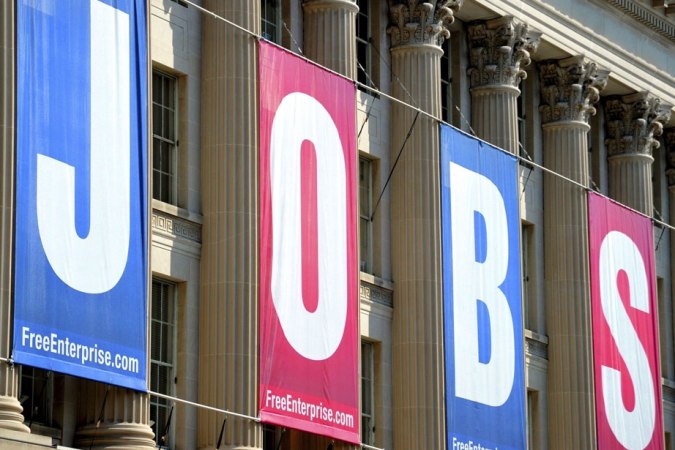US jobs engine gathers speed in January as wages rise
 US job creation accelerated in January, as the labor market continued to absorb workers at a robust pace, unemployment clung to a record low and wages moved higher, the government said in a key report Friday.
US job creation accelerated in January, as the labor market continued to absorb workers at a robust pace, unemployment clung to a record low and wages moved higher, the government said in a key report Friday.
And with a near 10-year record in wage gains, the report strengthened the case for the Federal Reserve to raise its benchmark interest rate in March, as it is widely expected to do.
The solid jobs report was a to be a measure of relief for an embattled White House, as President Donald Trump has taken credit for the extended run of good economic news amid political turmoil.
But the news, particularly the wage data, helped spark a Wall Street sell- off, with fear of rising interest rates and a widening yield curve sending the Dow Jones Industrial Average on its biggest one-day slide since June 2016.
The world's largest economy added 200,000 net new positions last month, driven by gains in construction, retail, restaurants and health care, the Labor Department said in the highly-anticipated report.
The result beat the consensus forecast among economists, which predicted an increase of 180,000.
Meanwhile, the unemployment rate remained at a 17-year low of 4.1 percent for the fourth month in a row.
Perhaps the key element of the report was average hourly earnings which continued to rise. Hourly wages rose 0.3 percent from the prior month to $26.74, putting worker pay up 2.9 percent compared to January of last year, the largest 12-month gain since June 2009.
Over the same period the consumer price index gained 2.1 percent, seasonally adjusted, but rising wages would be expected to put more pressure on prices, and perhaps push the Fed's inflation hawks to raise rates faster.
"After two years of tracking sideways at about 2.5 percent, we can't stress enough that a sustained upside break in wage growth will greatly empower Fed hawks and weaken the doves," Ian Shepherdson of Pantheon Macroeconomics said in a client note.
"In short, the labor market is tight, getting tighter, and employees are becoming more expensive.
The question for the Fed now is whether the plan for 'gradual' tightening will be enough if wage gains accelerate further."
- Wall Street jitters -
At the end of a topsy-turvy week, fear of rising interest rates drove the Dow down 2.6 percent, while the broader S&P 500 and tech-heavy Nasdaq both fell about two percent.
However, Chris Low of FTN Financial cautioned against jumping to conclusions on the wage data.
Hourly wages have been "so volatile in the past 12 months it's not yet possible to determine a pattern of wage pressures," he wrote in a client note.
The construction sector added 36,000 new positions, while restaurants and bars added 31,000 new jobs. The ranks of health care workers swelled by 21,000.
But revisions to November and December subtracted a net 24,000 positions. That brought average job creation over the last three months of the year to 192,000, beating the 2017 monthly average of 181,000.
However, the unemployment rate for African-Americans, which Trump hailed this week in his State of the Union address, rose nine tenths of a percentage point to 7.7 percent, just below the 7.8 percent in January last year.
Trump took office a year ago, pledging to create 25 million new jobs over a decade, or just over 200,000 per month. But the data show the economy added 2.17 million jobs in 2017, fewer than 2016 when there were 2.34 million and below the 2.5 million needed to stay on track towards Trump's goal.
The Labor Department said January's government shutdown, after Congress failed to approve a new budget, limited the response rate for the household survey, which provides the unemployment rate.
Interviewers ceased operations from January 20 to January 22 but overall there were "no discernable effects" on the unemployment rate, the department said.
You got a 1.25% upvote from @allaz courtesy of @joy270!